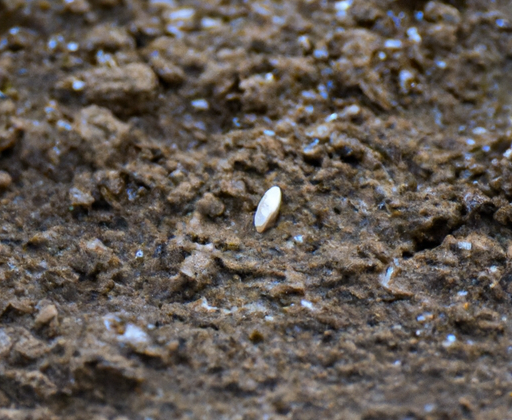Why You Should Care About Your Food’s Carbon Footprint
Hey there! Have you ever heard of the term “carbon footprint”? It’s basically a way of measuring the impact that our daily actions have on the environment. And believe it or not, the food that we eat plays a significant role in our carbon footprint.
Reducing food’s carbon footprint is crucial if we want to protect the planet and ensure the sustainability of our food systems. The agricultural sector is a major contributor to greenhouse gas emissions, and the way that we produce, transport, and consume food can have a huge impact on the environment and our climate.
So, if you’re someone who cares about the future of our planet and wants to make a positive impact, then understanding and reducing your food’s carbon footprint is a great place to start.
So, what exactly contributes to a food’s carbon footprint? Well, let me tell you, there are a few major factors that come into play.
Transportation:
One of the biggest contributors to a food’s carbon footprint is transportation. This includes the emissions released when food is shipped, trucked, or flown to get to our grocery stores. This is why it is recommended to buy locally sourced food, in order to reduce the carbon emissions from transportation.

The packaging that food comes in also contributes to its carbon footprint, as this requires energy and resources to produce. To reduce this impact, look for food with minimal packaging or choose reusable packaging options.
Processing and Farming Methods:
The methods by which food is processed and farmed can also have an impact on its carbon footprint. For example, conventional farming practices often rely heavily on fossil fuels and chemicals, whereas sustainable farming methods aim to reduce these impacts. Choosing organic options can also have a positive impact.
As you can see, there are a variety of factors that contribute to a food’s carbon footprint. By being mindful of these factors and making conscious choices, we can work towards reducing our impact and creating a more sustainable food system for the future.
If you want to learn more about sustainable food practices, check out this article on preparing for a food-secure future.
Reduce Your Food’s Carbon Footprint with These Expert Tips
Now that I’ve talked about what contributes to a food’s carbon footprint, let me tell you some expert tips on reducing it. These tips are going to help you make a big difference- not just for the environment, but also for your wallet.
Eat Locally, It’s Simple but Effective
One of the easiest ways to reduce your food’s carbon footprint is to eat locally. Local foods have traveled a much shorter distance to get to your plate which means a decrease in carbon footprint from transportation. You can also support local farmers who use sustainable farming practices, making it a win-win. Additionally, buying seasonal produce usually means better prices and an assurance of freshness.
Buy Organic, The Benefits are Widespread
Other than reducing the amount of pesticides you consume and supporting more sustainable agricultural practices, buying organic can also reduce the carbon footprint of your food. Organic agriculture uses less energy and produces fewer greenhouse gases than conventional farming methods. Plus, shopping for organic foods encourages more businesses to invest in organic agriculture.
Reduce Food Waste, Less is More
We waste more food than we realize, and all of that wasted food ends up in landfills where it releases methane – a greenhouse gas that is much more harmful than CO2. Reducing food waste is an effective way to reduce the overall carbon footprint of our food. You can start by planning ahead, making a shopping list based on what you actually need. Also, try using your leftovers in creative ways, and compost food scraps instead of throwing them in the trash.
Choose Sustainable Protein Sources, It’s More Exciting than it Sounds
Choosing sustainable protein sources is not only good for the environment but also for your health. Some of the most popular protein sources such as beef, lamb and pork have a high carbon footprint. Consider trying other protein sources like plant-based proteins or sustainable seafood. Sustainable protein sources like beans, lentils, and tofu can be tasty too!
Let’s Reduce Our Food’s Carbon Footprint!
Wow, we’ve covered so much in this blog post about carbon footprints and how we can reduce them through our food choices! It’s important to understand that everything we do has an impact on the environment, and that includes the food we eat. By making small changes, we can make a big difference in reducing our food’s carbon footprint.
In summary, we learned that a carbon footprint is the amount of greenhouse gases emitted through human activities, and that food production contributes a significant amount. This is why reducing our food’s carbon footprint is important.
We also looked at the three main factors that contribute to a food’s carbon footprint: transportation, packaging, and processing and farming methods. By being mindful of these factors, we can make more conscious choices about the food we consume.
So, what can we do to reduce our food’s carbon footprint? We can eat locally, buy organic, reduce food waste, and choose sustainable protein sources. By implementing these four simple changes, we can make a big difference in protecting our planet and preserving it for future generations.
In conclusion, I encourage everyone reading this to think about their food choices and how they impact the environment. By making small changes, we can collectively make a big difference in reducing our food’s carbon footprint and protecting our planet. Let’s do our part, one bite at a time!

